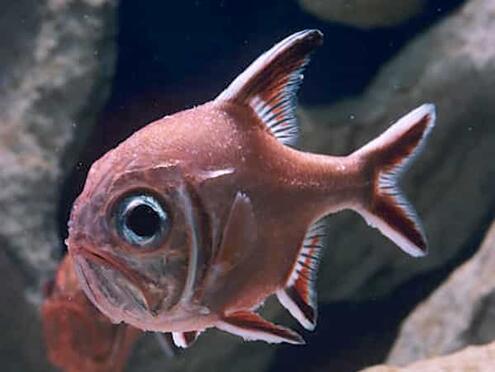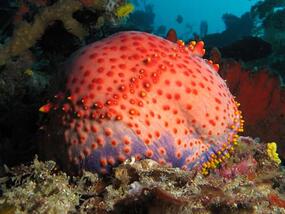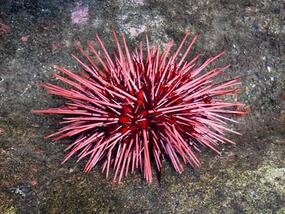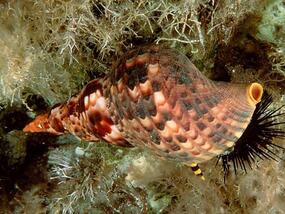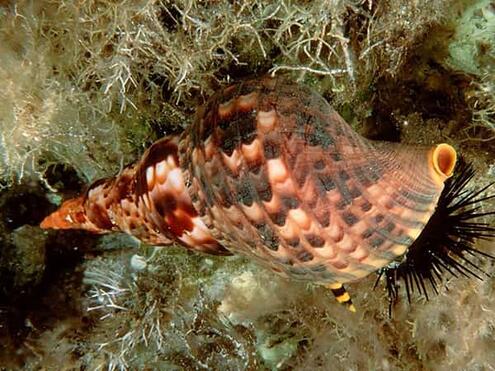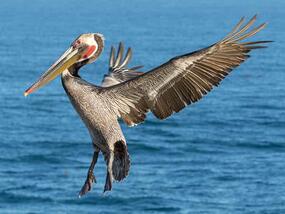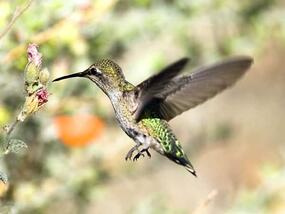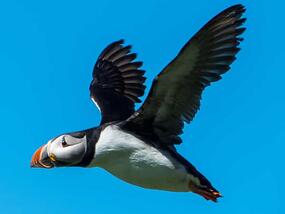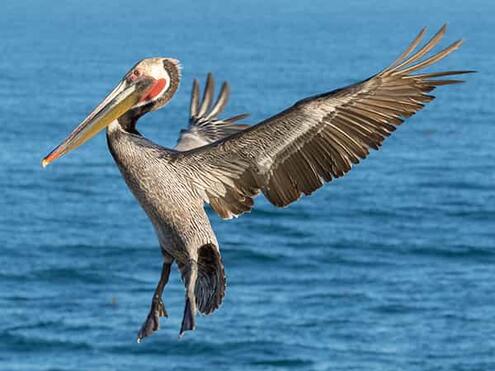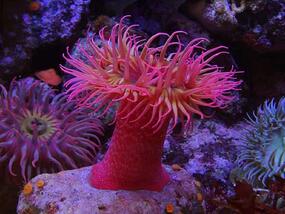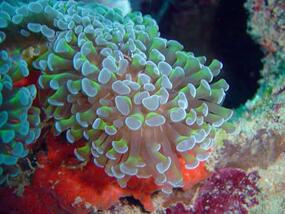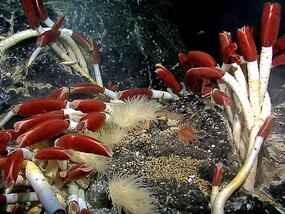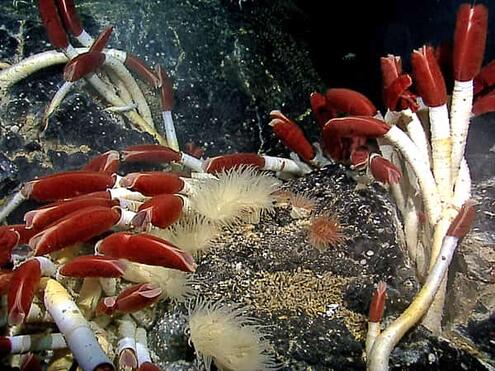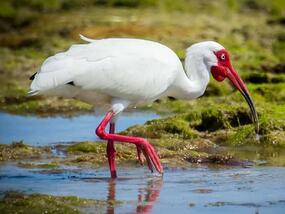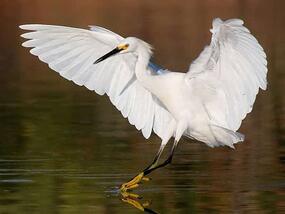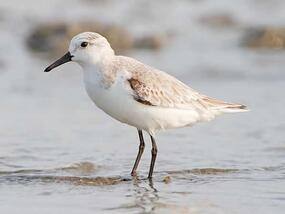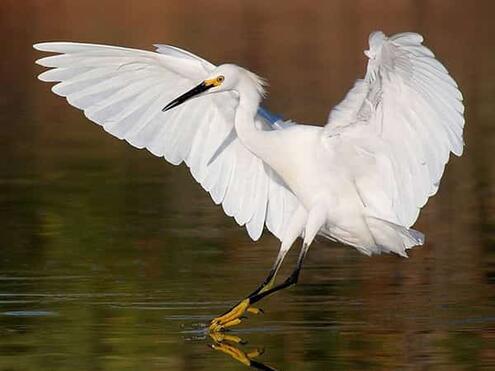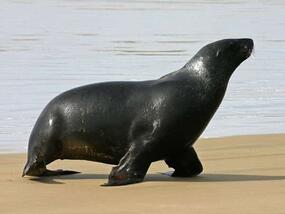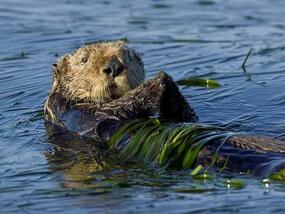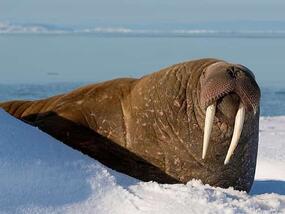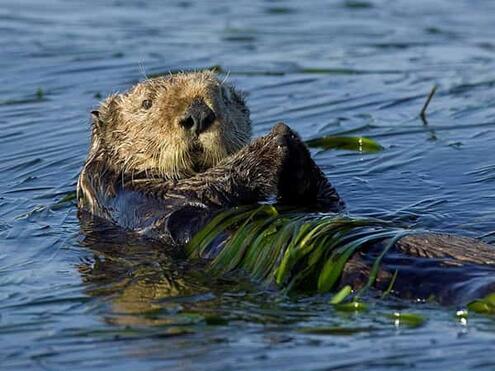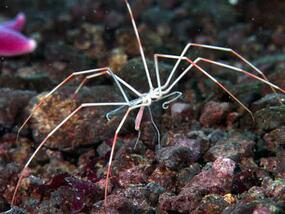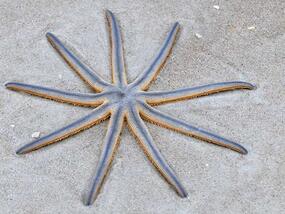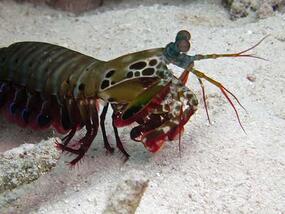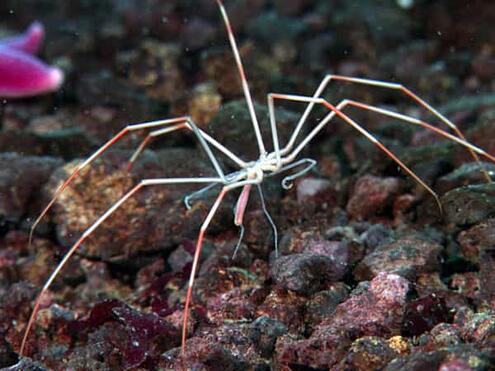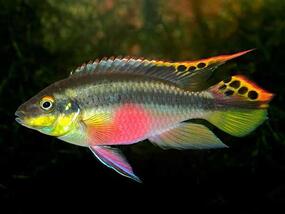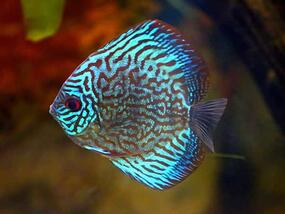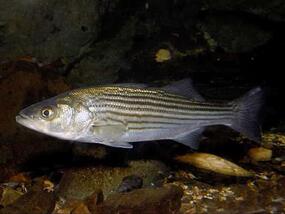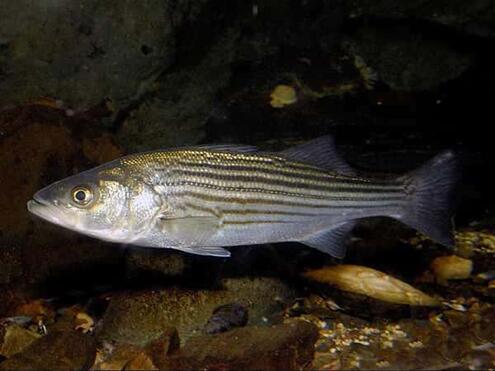Ocean
Creature
Feature
Ocean Creature Feature
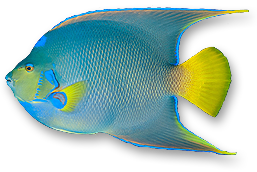
From the sunlit shallow waters to the sunless deep sea, the ocean is home to many kinds of organisms. What adaptations help these organisms survive in their ecosystems? Take this quiz to find out.
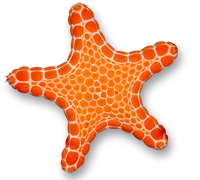
Click on the picture that matches each clue!
This tiny, big-eyed animal swims in the deep, cold waters off New Zealand. Its bright orange skin is less striking in its dark, bluish environment. It grows slowly and may live more than 100 years. It used to be called "slimehead" until it became a popular meal.
Which ocean creature is it?
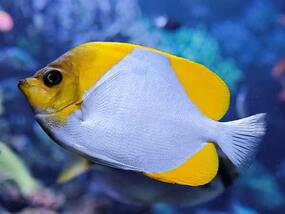
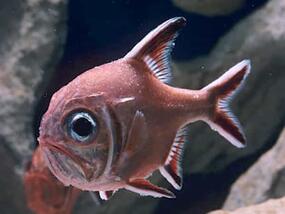
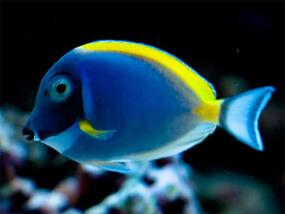
Image Credits:
queen angelfish, courtesy of NOAA by G. P. Schmahl / (CC BY 2.0); sea star, courtesy of Klaus Stiefel (CC BY-NC 2.0); orange roughy, © Auscape International Pty Ltd/Alamy; pyramid butterflyfish, courtesy of Ezio Armando/CC BY-NC-ND 2.0; powderblue surgeonfish, courtesy of Marcin Lachowicz/CC BY-NC-ND 2.0; triton trumpet, © M. Mildenberger/AGE Fotostock; sea apple, courtesy of Alexander Vasenin/CC BY-SA 3.0; sea urchin, courtesy of Bill Abbott/CC BY-SA 2.0; brown pelican, courtesy of Mick Thompson/CC BY-NC-2.0; hummingbird, courtesy of Butterfield/CC BY-NC-2.0; puffin, courtesy of David Wildlife/CC BY 2.0; giant tubeworms, courtesy of NOAA; tube anemone, courtesy of Paul Thompson/CC BY-NC-ND 2.0; hammer coral, courtesy of NOAA; snowy egret, © Ruth Jolly/AGE Fotostock; ibis, courtesy of Thomas James Caldwell/CC BY-SA 2.0; sanderling, courtesy of Harrison/CC BY-SA 3.0; sea otter, © Suzi Eszterhas/AGE Fotostock; Hooker's sea lion, courtesy of Matt Binns/CC BY-NC-ND 2.0; walrus, © Bernd Rohrschneider/AGE Fotostock; giant sea spider, courtesy of AMNH, Norbert Wu; nine-armed sea star, courtesy of Andrea Westmoreland/Wikimedia Commons; peacock mantis shrimp, courtesy of Craig D./CC BY-SA 2.0; striped bass, © Robert S. Michelson/AGE Fotostock; Kribensis purple cichlid, © Zoonar/AGE Fotostock; discus fish, courtesy of Cuatrok77/CC BY-SA 2.0.




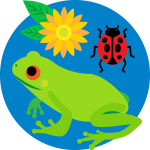 Biodiversity
Biodiversity
 Brain
Brain
 Genetics
Genetics
 Marine BiOLogy
Marine BiOLogy
 MicrobiOLogy
MicrobiOLogy
 PaleontOLogy
PaleontOLogy
 ZoOLogy
ZoOLogy
 AnthropOLogy
AnthropOLogy
 ArchaeOLogy
ArchaeOLogy
 Astronomy
Astronomy
 Climate Change
Climate Change
 Earth
Earth
 Physics
Physics
 Water
Water

